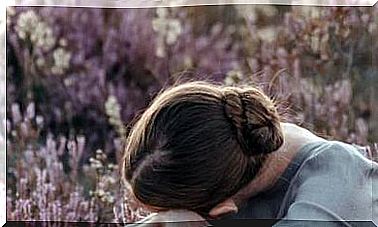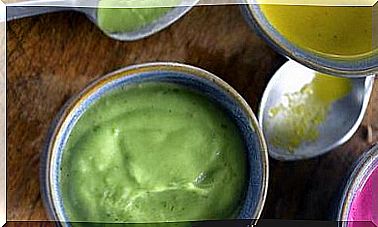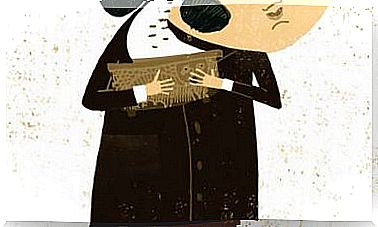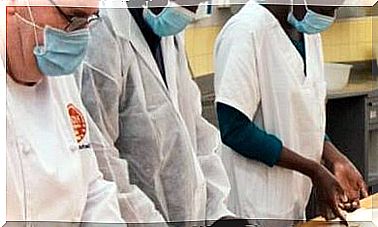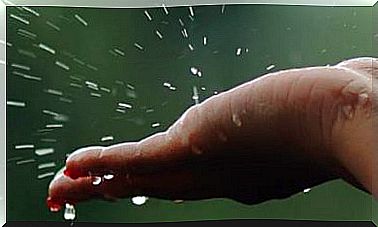“Pediatric Environmental Health Is Fundamental”
Tobacco, alcohol, cannabis, a toxic environment … threaten the health of the baby during pregnancy and in its upbringing, a risk analyzed by the pediatrician Ferran Campillo.

Ferran Campillo founded the first Pediatric Unit in Catalonia dedicated to environmental health at the Hospital de Olot y Comarcal de la Garrotxa, the only initiative of its kind in Spain, together with the existing one at the Hospital Virgen de la Arrixaca, in Murcia, where Ferran made his specialization. But Campillo’s vocation for paediatrics and environmental health had already been awakened at the La Paz University Hospital, in Valencia, at the hands of Dr. Josep Ferris Tortajada, a pioneer in the field.
“We monitor environmental risks to children’s health”
—What do they do in the environmental pediatric units?
—We develop different activities, but the most important part of our unit is the clinic. We are clinicians, pediatricians and nurses, and we carry out environmental screening during pregnancy for all pregnant couples in the Garrotxa region.
-What does it consist of?
—When couples begin monitoring the pregnancy, with their tests, ultrasounds and controls with the gynecologist and the midwife, they come to our unit to answer what we call “green leaf.” It consists of a short interview where we ask a series of questions to determine if there is any type of environmental risk that may have an impact on the health and development of the future baby.
—What factors do they analyze?
—We analyze if there may have been exposure to ionizing radiation (X-rays, scintigraphy…), we look at the socioeconomic environment, if they have any kind of financial need to follow up with the Social Work colleagues; we review the exposure to drugs or keratogenic products that can cause malformations or that could affect the correct development of the fetus, from consumer products to medicines… We also look at occupational exposure; That is, what do future dads work on, what tasks do they carry out, if they may be exposed to any substance or activity that is harmful to the future baby …
—But La Garrotxa is a privileged natural environment…
—The main industry and the economic engine is the meat industry. But we also have small and medium-sized companies that manufacture plastic parts. In addition, as in any other place, we have diverse professions: hairdressers, people who work in gas stations … When it comes to making the “green leaf”, it is not enough for us to know the profession of the father and mother, but within the profession, what possible risks the person has. It is not the same to work as an administrative worker in an office than in a mechanical workshop where you are more exposed to a polluting environment; or being next to a field where they use agrochemicals.
“Exposure to some environmental factors can lead to disease in adult life”
– Why is it important to evaluate in the pregnancy stage?
—Environmental screening can be done at any stage, but we do it during pregnancy because, on the one hand, what happens from conception to 2-3 years of the child are moments of special vulnerability for the development of normal structures of the child. small and for future illnesses you may have later, not in the immediate postpartum period. Even exposure to some environmental factors can lead to disease in adult life. We believe that it is not only important to avoid suffering to families, babies and children, but it is also highly profitable, because with the relatively little effort and time that we dedicate in pregnancy or even before pregnancy, we can modify some exposures that they can affect the future health of families.
—I suppose that the investigation has a later development…
—When we analyze the data that we have and compare them with those of Murcia we see that they are very similar. Some, due to the characteristics of the population, may vary a little but, for example, with regard to consumption or exposure to alcohol or tobacco and other drugs, in Garrotxa and Murcia we are very similar, which suggests that If we extrapolate the data to the rest of Catalonia or other parts of Spain, we will have similar data.
—What are the main pathologies related to environmental health of mothers and fathers?
—Pathologies in pregnant women we find few. Sometimes there are some cases of acute poisoning, a woman who did not have her wood stove closed properly and has been poisoned by carbon monoxide, but they are very isolated cases. What we do find more are risk exposures, some of which are manifested when the baby is born or is older. The most relevant are exposure to tobacco smoke (half of pregnancies are exposed to it by the future mother or by her partner, and we already have medical evidence that this has a very important impact on the health of the future baby); and exposure to alcohol, which has surprised us. In the studies that we have, which coincide closely with those of Murcia, approximately half of the pregnancies have been exposed at some point to alcohol.
“A significant percentage …
” “ Yes, and knowing that there is no known safe dose can have a tremendous impact on our society.” Of these cases, only a small part will be affected by a “fetal alcohol spectrum disorder.” But even if low doses are recorded in the majority of the population, this has an impact on society because alcohol is neurotoxic to the developing brain. If it affects half of the population in a general way, it will surely lower the IQ of an entire community, and that will condition that there are fewer people with high capacities and more people with some type of dependency or intellectual disability. Perhaps for the person who has been somewhat exposed to alcohol the effects are practically not noticeable, but as a society it can affect intelligence or general prosperity.
“And what dose of alcohol are we talking about?”
—There is no known safe dose during pregnancy. Until recently some doctors even recommended a glass of wine (outside of pregnancy). But we already have evidence that alcohol is a risk factor for certain pathologies. And if it can have this effect in adults, imagine in pregnancy, when there are developing structures, especially the brain. We cannot say that by drinking one beer a day nothing happens and that with two beers there is risk.
“So zero alcohol?”
-Effectively. The message that a glass of wine with food is not harmful is wrong: alcohol and pregnancy do not marry, therefore, zero alcohol. We are even beginning to have evidence that the alcohol consumed by the father between two and three months before pregnancy, when spermatogenesis occurs, may have some kind of effect on the offspring. These data are part of animal experimentation studies, in humans we are still not sure. But that encourages us more to sustain zero consumption of the couple. In this way we are also encouraging the couple to adopt healthy habits so that they are perpetuated in that home.
“Is alcohol more dangerous than tobacco?”
“They are two harmful toxins, but perhaps the impact alcohol has on the developing brain can lead to more irreversible damage.” However, tobacco is a risk factor that we often encounter and that is why we have launched a smoking cessation group for pregnant couples. We think that we not only have to address the pregnant woman, but also the future father, the partner, because if the father continues to smoke, he will perpetuate the smoke in the home and that will affect the health of the future baby.
—But you also analyze other factors in your studies…
—Yes, such as exposure to pesticides or contact with nature from the father and mother… The physical activity carried out by families in contact with nature weighs heavily. And then other questions arise from families themselves. In the end, we ask them if there is any environmental activity that could affect their health, and we always find surprises, like who tells you: «Well, it turns out that I live in a farmhouse, in an isolated house, and the water we drink is from a well and next to it we have a pig farm. This gives rise to investigate and resolve these doubts with the couples.
“Although there is not as much evidence as with tobacco, we can say that cannabis can affect neurodevelopment.”
—And you analyze substances like cannabis…?
—Yes, around 10% of pregnancies are exposed to cannabis. Actively, 4%. Although there is not as much evidence as with tobacco, we can say that cannabis can affect neurodevelopment. Specifically, it is related to problems with attention, memory … in the future baby.
—And if you have a “toxic” job or live in a polluted urban environment, what advice do you have?
—There are jobs in which the risk is higher or lower. In those cases, we make an assessment and offer a series of protective measures that the mother and father can take. With this we already reduce enough exposure to certain toxins. In other cases we have to recommend that they request a relocation within their own company, so that they can develop different tasks. And if it is not possible and in the work environment the future mother has something that may pose a risk, she has the right to take a 100% paid leave until the end of the pregnancy, even until the end of breastfeeding.
—Do you know if units like yours and Murcia’s are going to be created in other areas of Spain?
—A couple of years ago we created, within the Spanish Pediatric Association, the Pediatric Environmental Health Committee. And from there we are developing materials for primary care and hospital bedside pediatricians, creating training activities to stimulate the creation, if not of new units, then of pediatric environmental health activities, because this is fundamental. It may not be possible to have a pediatric environmental health unit in each autonomous community, but at least it is possible to provide tools so that all pediatricians have knowledge of pediatric environmental health and have a place to refer or consult their doubts in this area.
The “green leaf” of pregnancy
It is a tool to facilitate the optimal development of the fetus and the rearing, and includes the following data.
Personal information. In the questionnaire, the mother and father are asked their age, ethnic origin, and the family’s net monthly income.
Obstetric history. Previous pregnancies, breastfeeding weeks, miscarriages or abortions, if any, fertility treatments …
Ionizing radiation. Medical tests carried out during the periconceptional stage (X-rays, CT, dental or any other) and the dates of the same.
Risks at work. The occupation of the father and mother since three months before the date of the last period and exposure in the workplace to potential toxins. They also ask about leisure activities that may involve contact with some chemical substances, such as paint, mechanics, model aircraft …
Smoking. The father and mother are asked about their smoking habits (if they are), date of initiation of the habit and if they would like to quit. And if they don’t smoke, if they are exposed to secondhand smoke, by friends or family.
Other drugs Wondering if they have been exposed to cannabis, cocaine, heroin, or other drugs at some point in the pregnancy or three months before it.
Alcohol. Consumption of alcoholic beverages from three months before pregnancy, daily habits and changes that have been introduced or that they show a willingness to introduce because of the pregnancy.
Domestic exhibitions. Type of home, year of construction, presence or absence of problems (cockroaches, ants, rodents …), use of chemical products (at home, orchard or garden) and perceived environmental risks.
